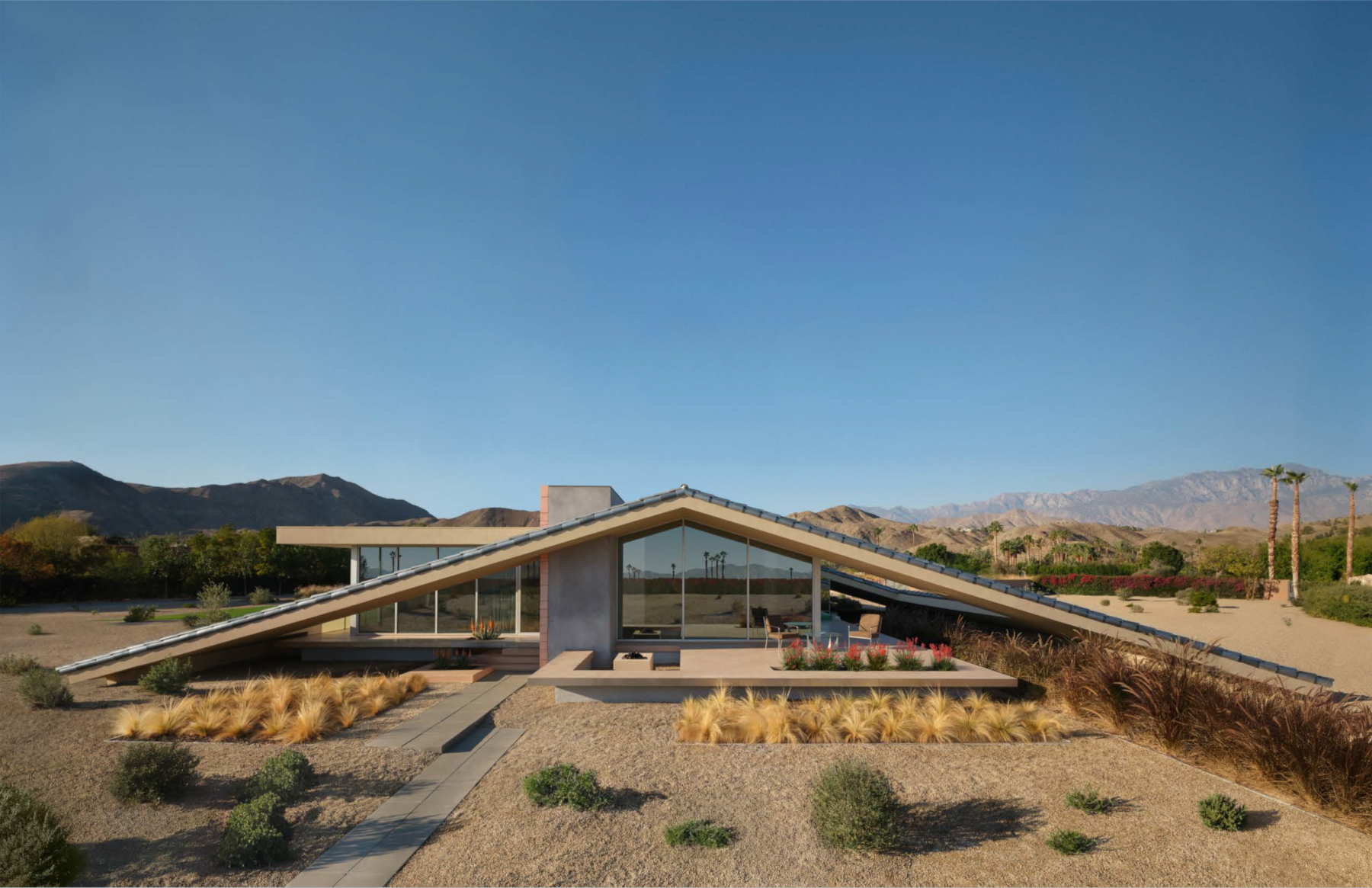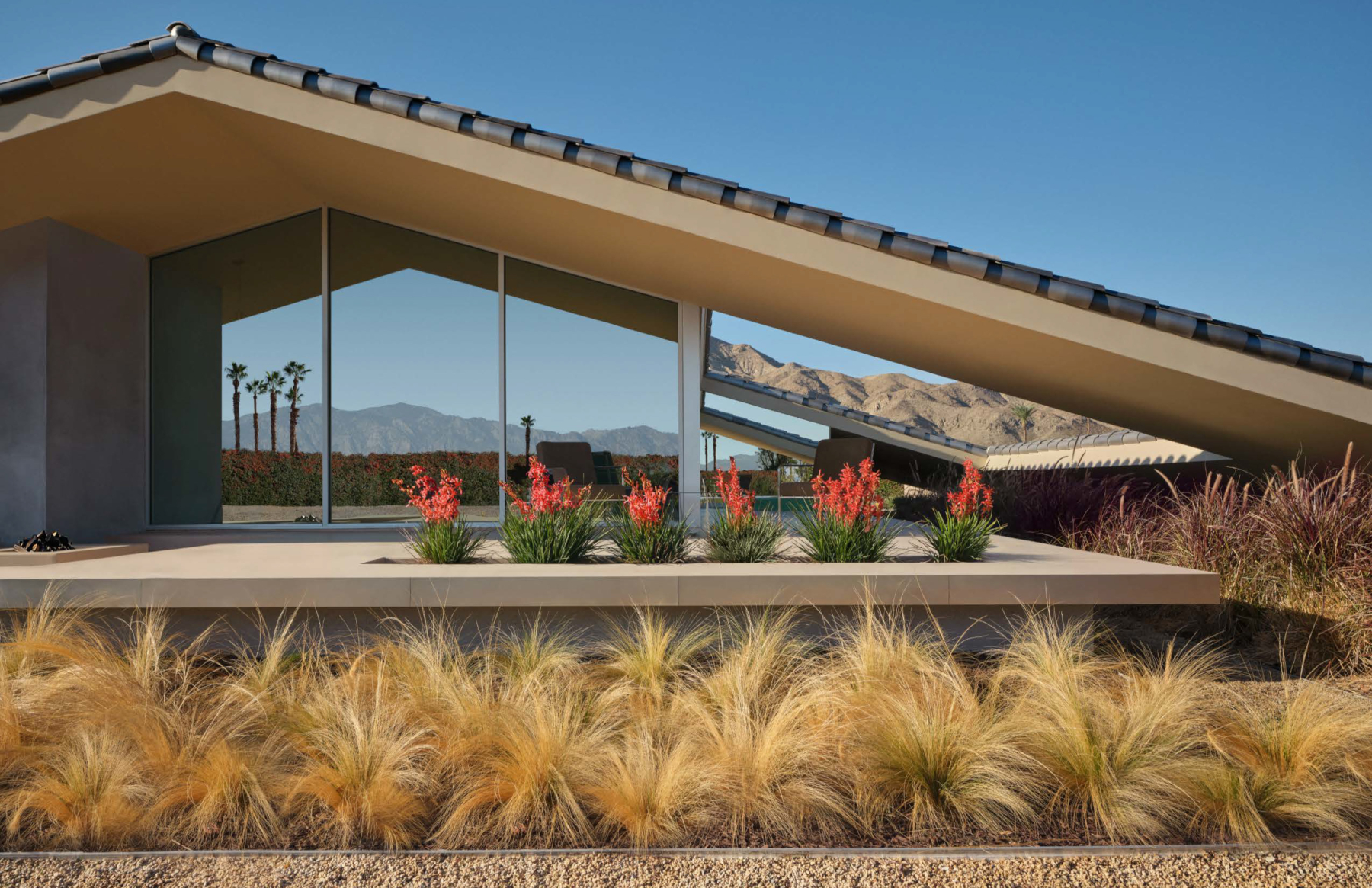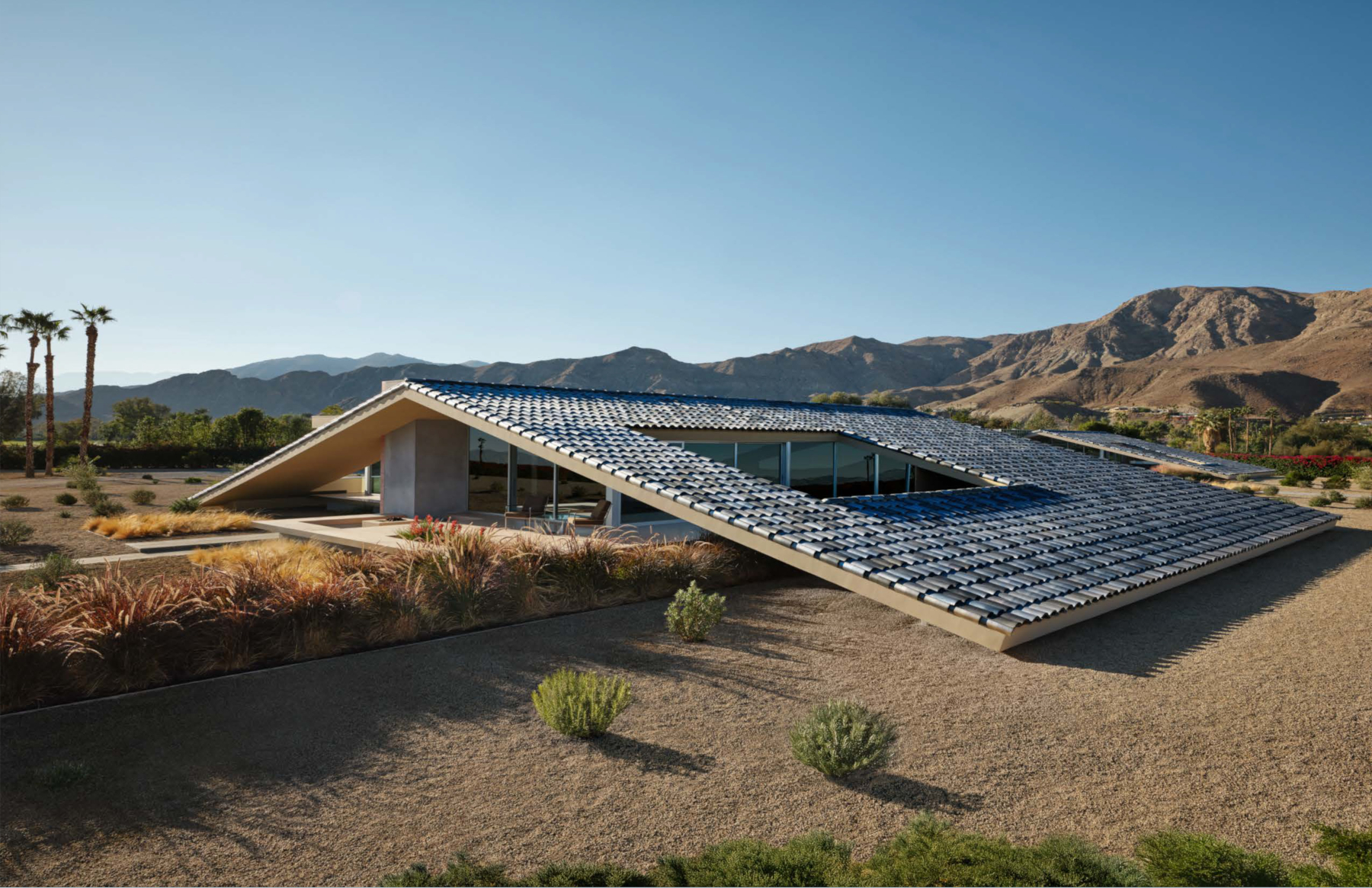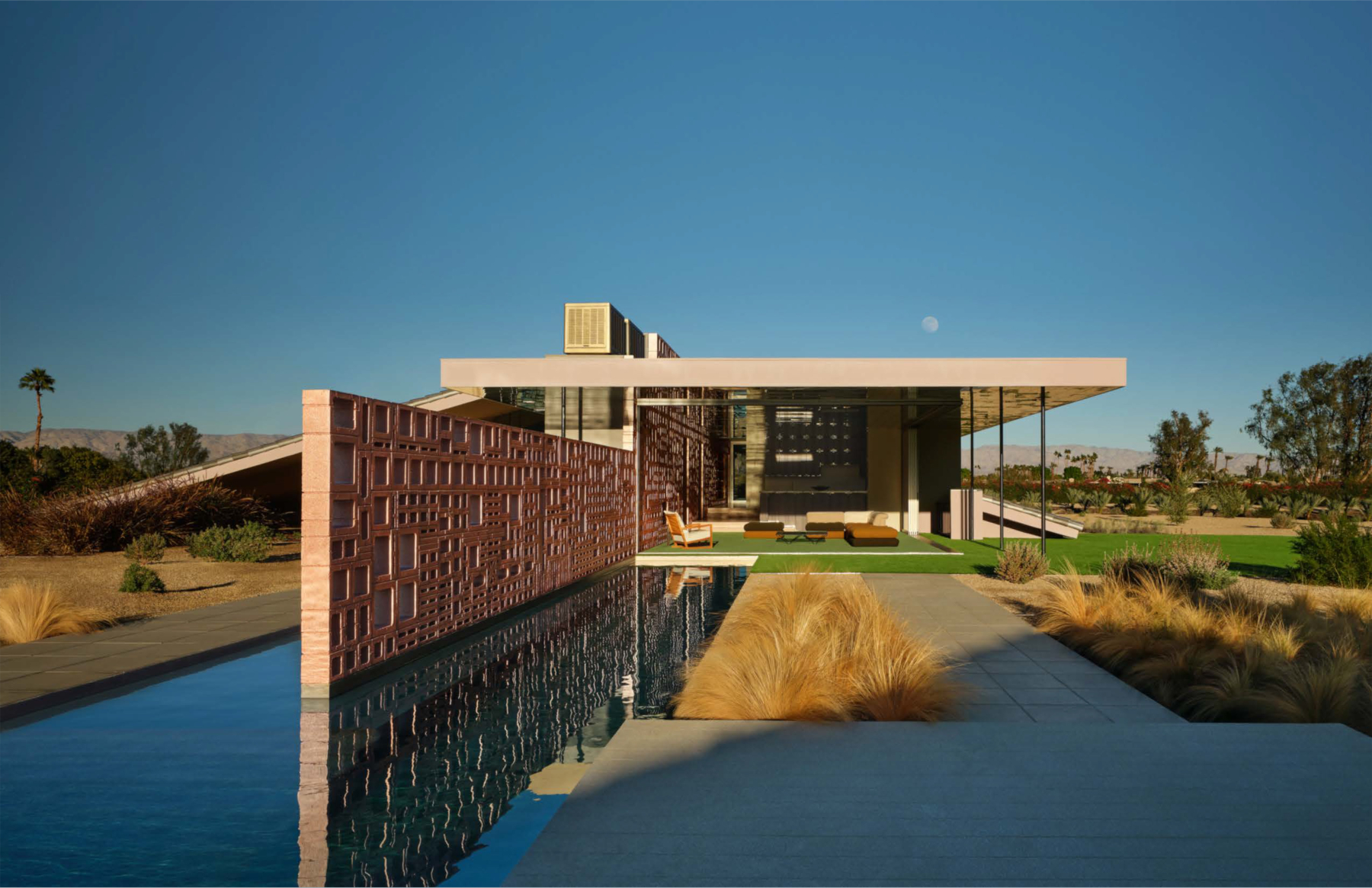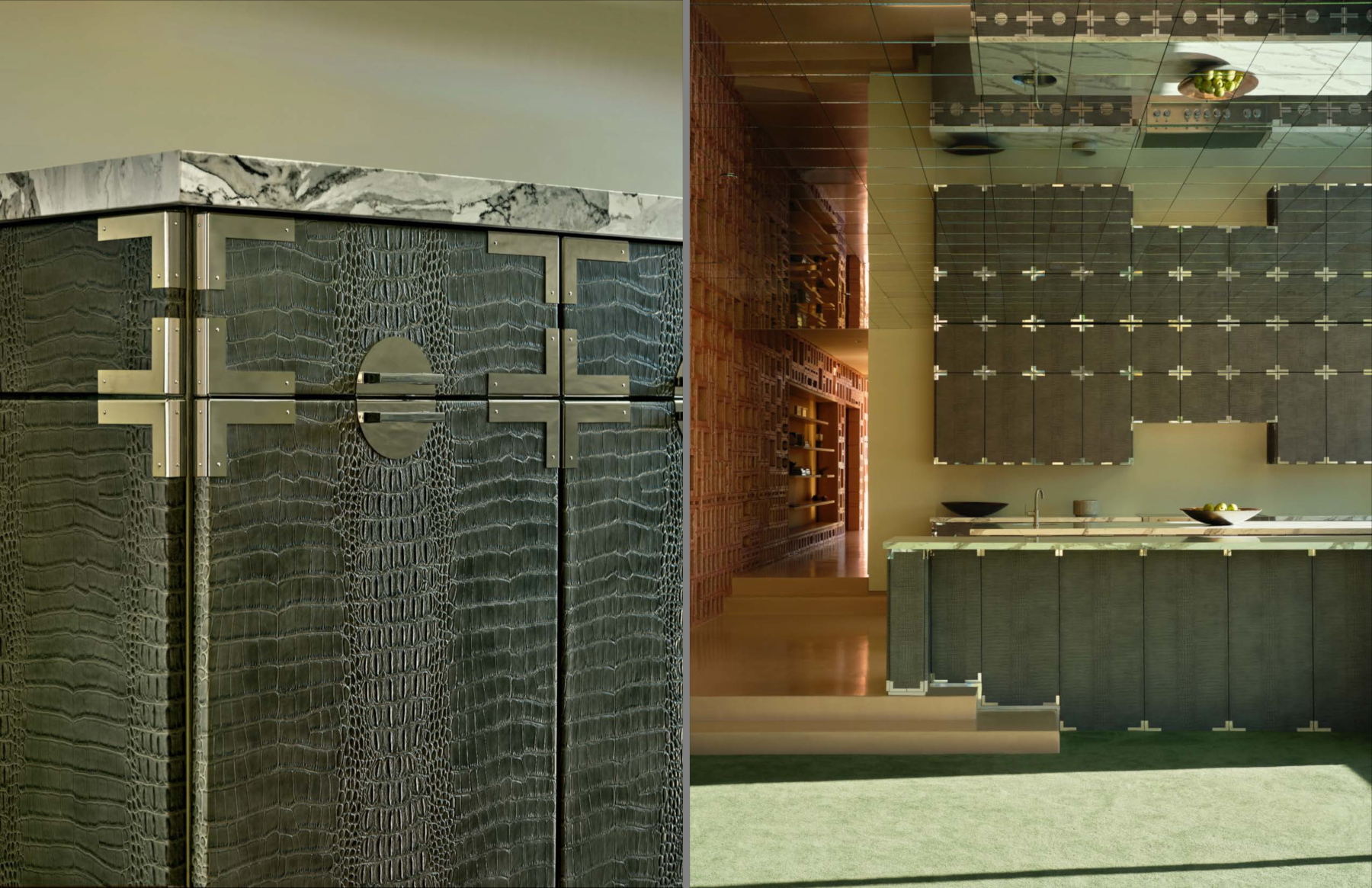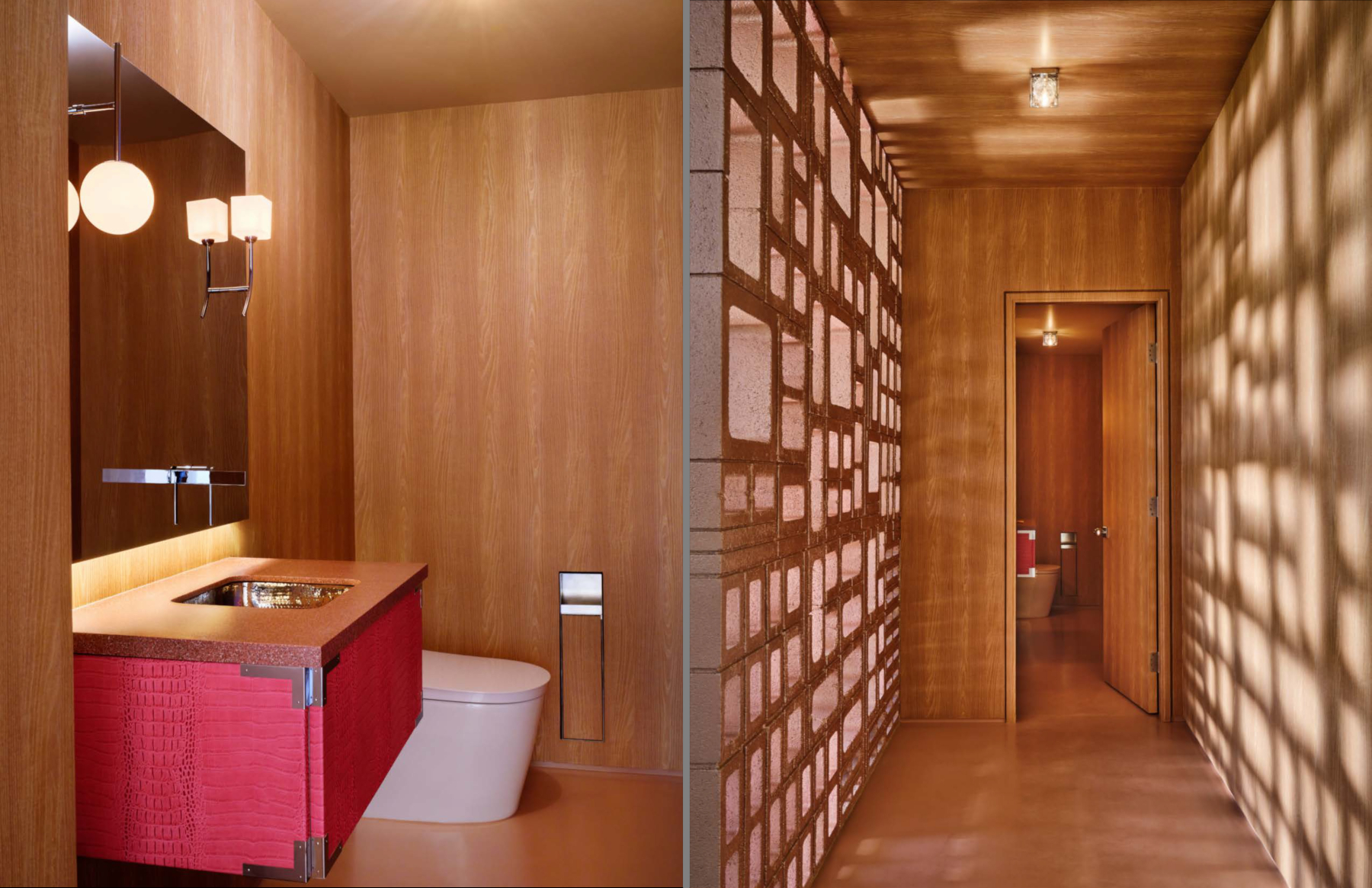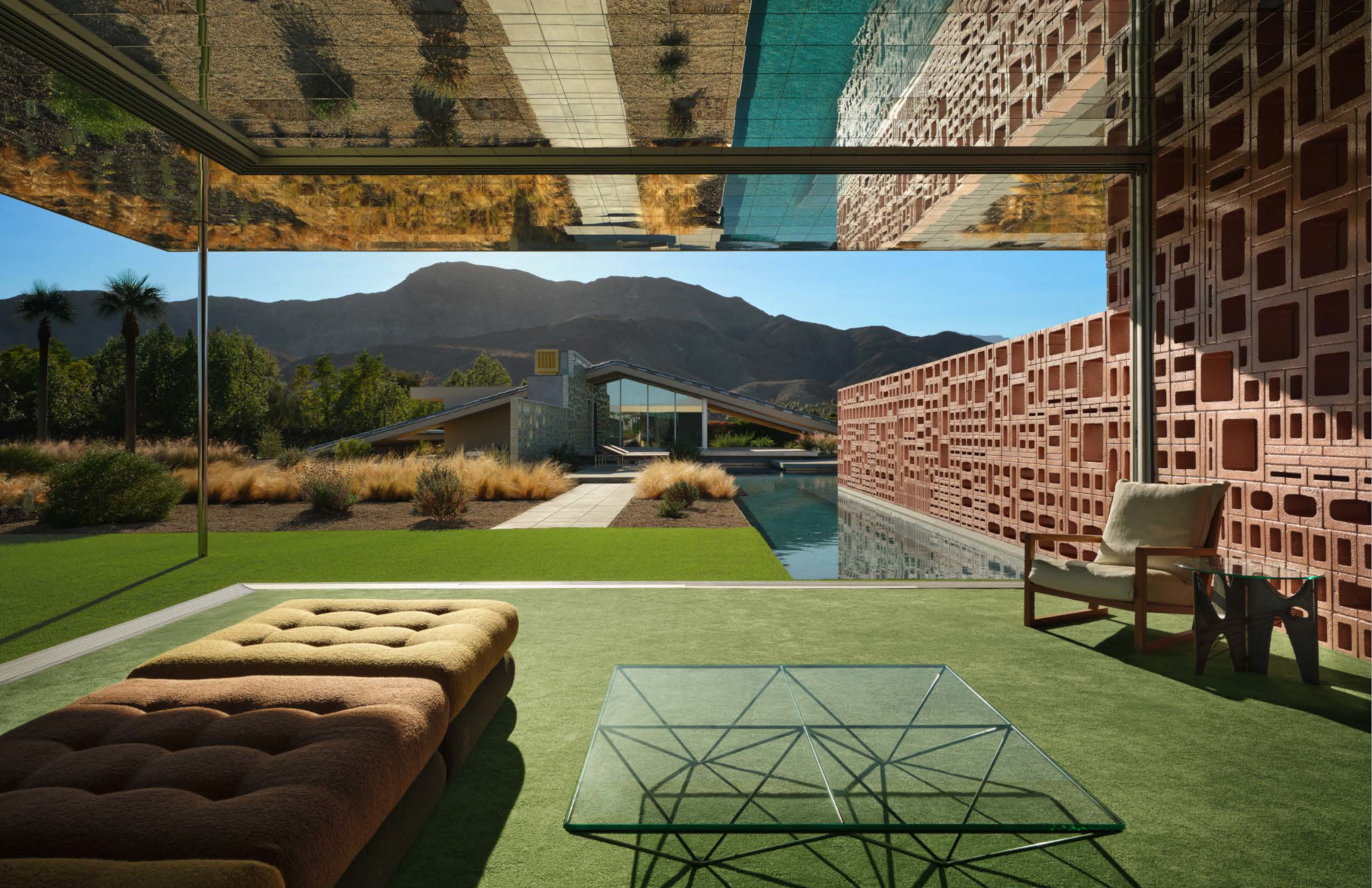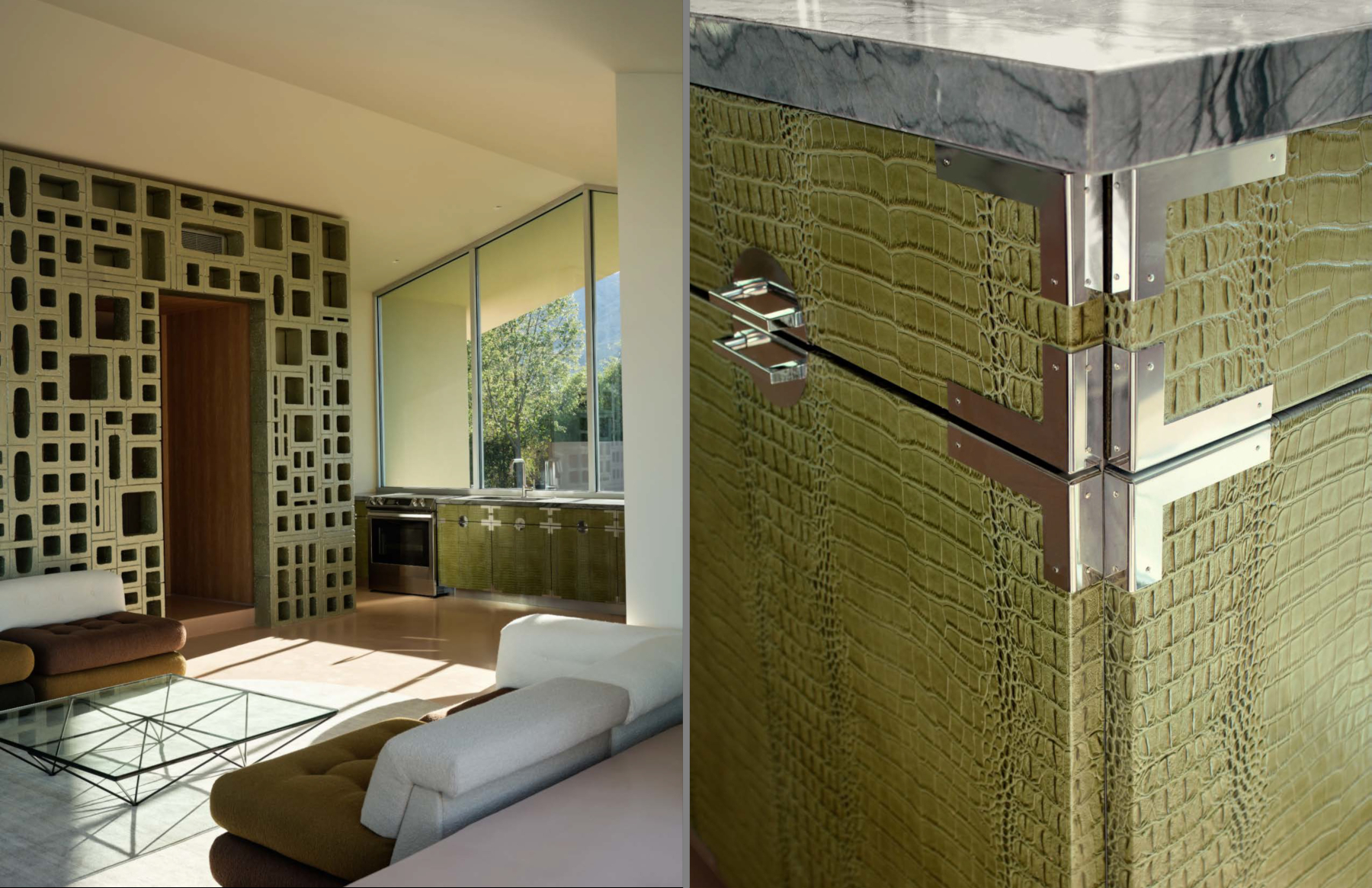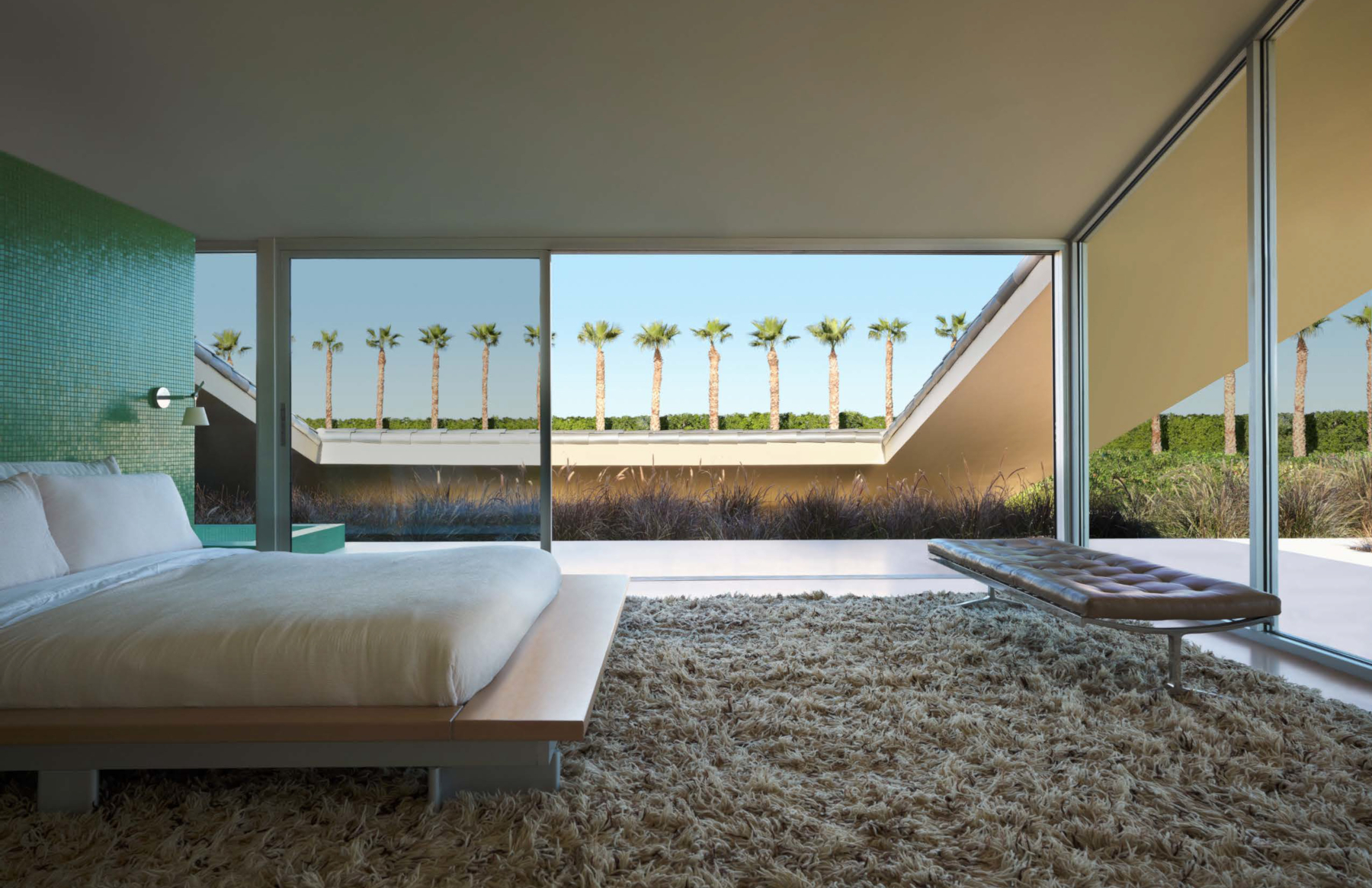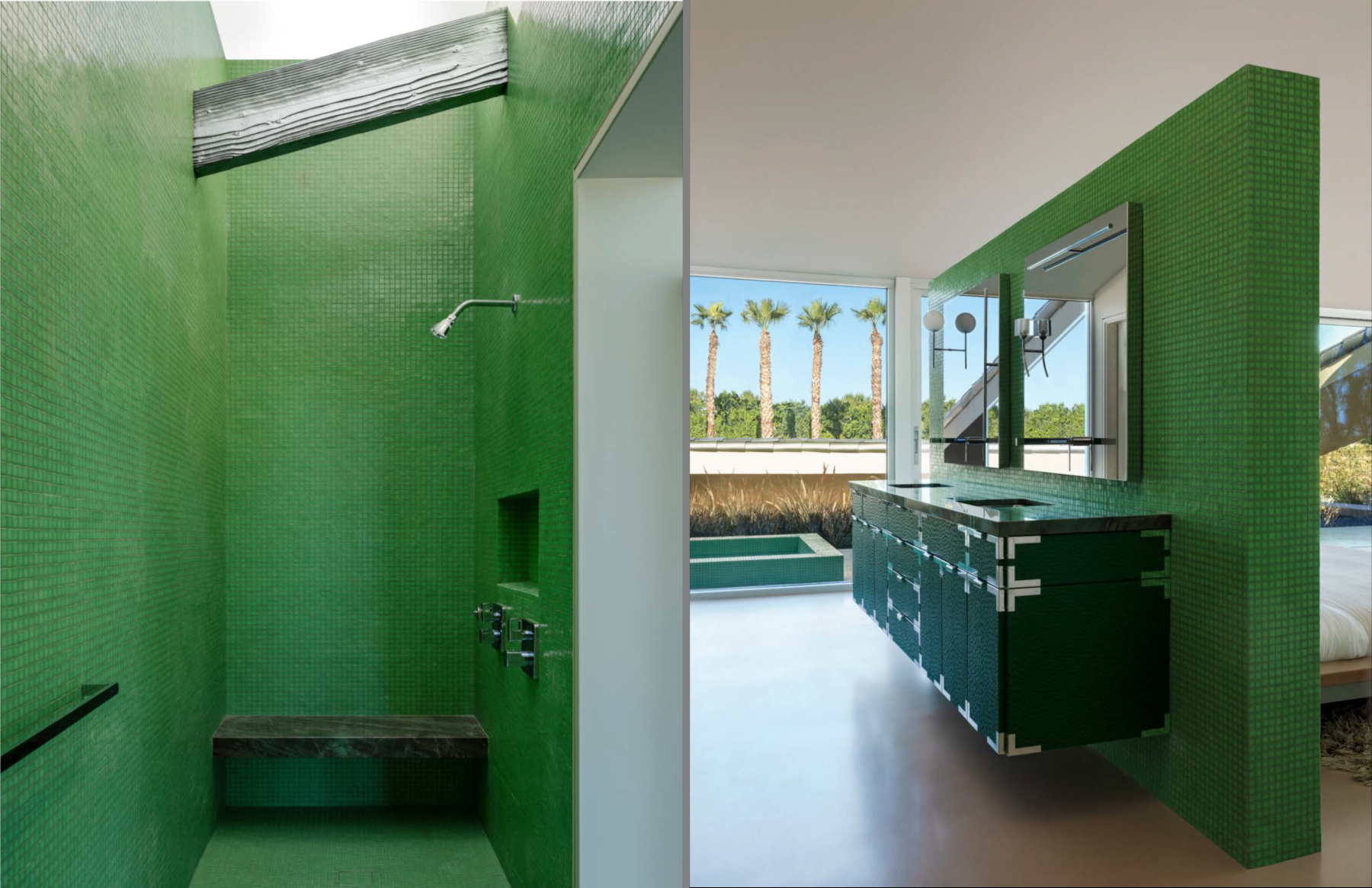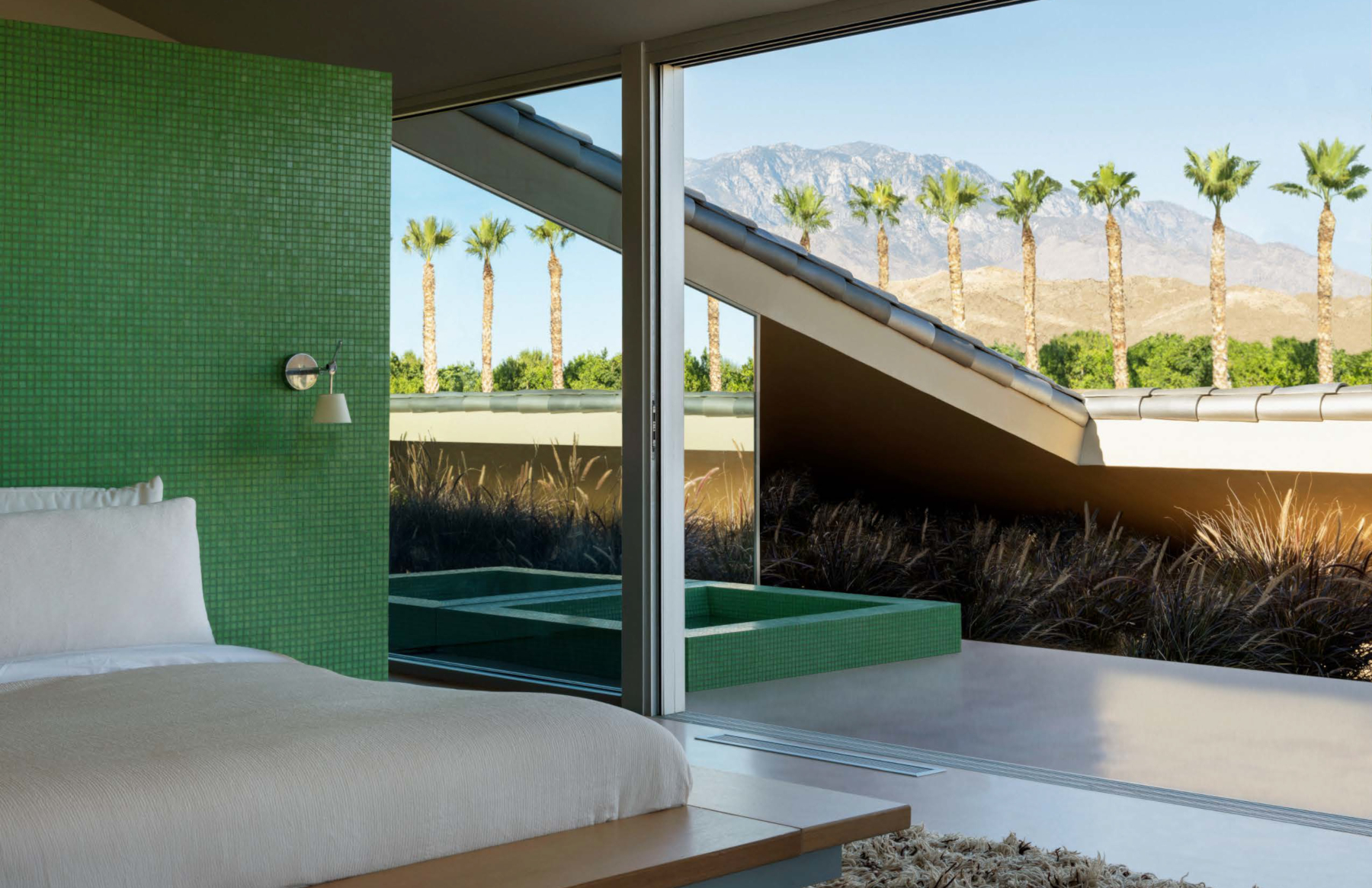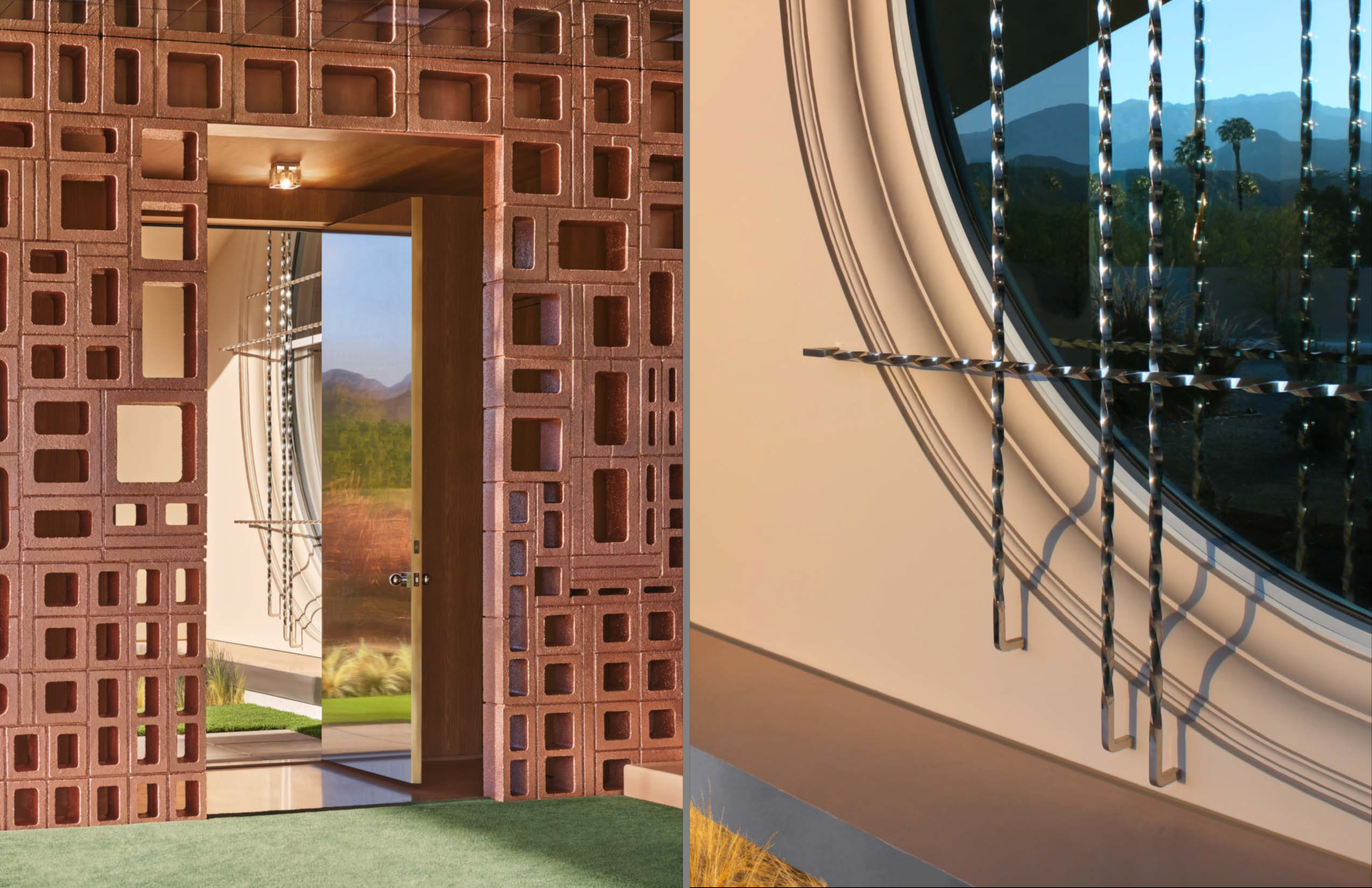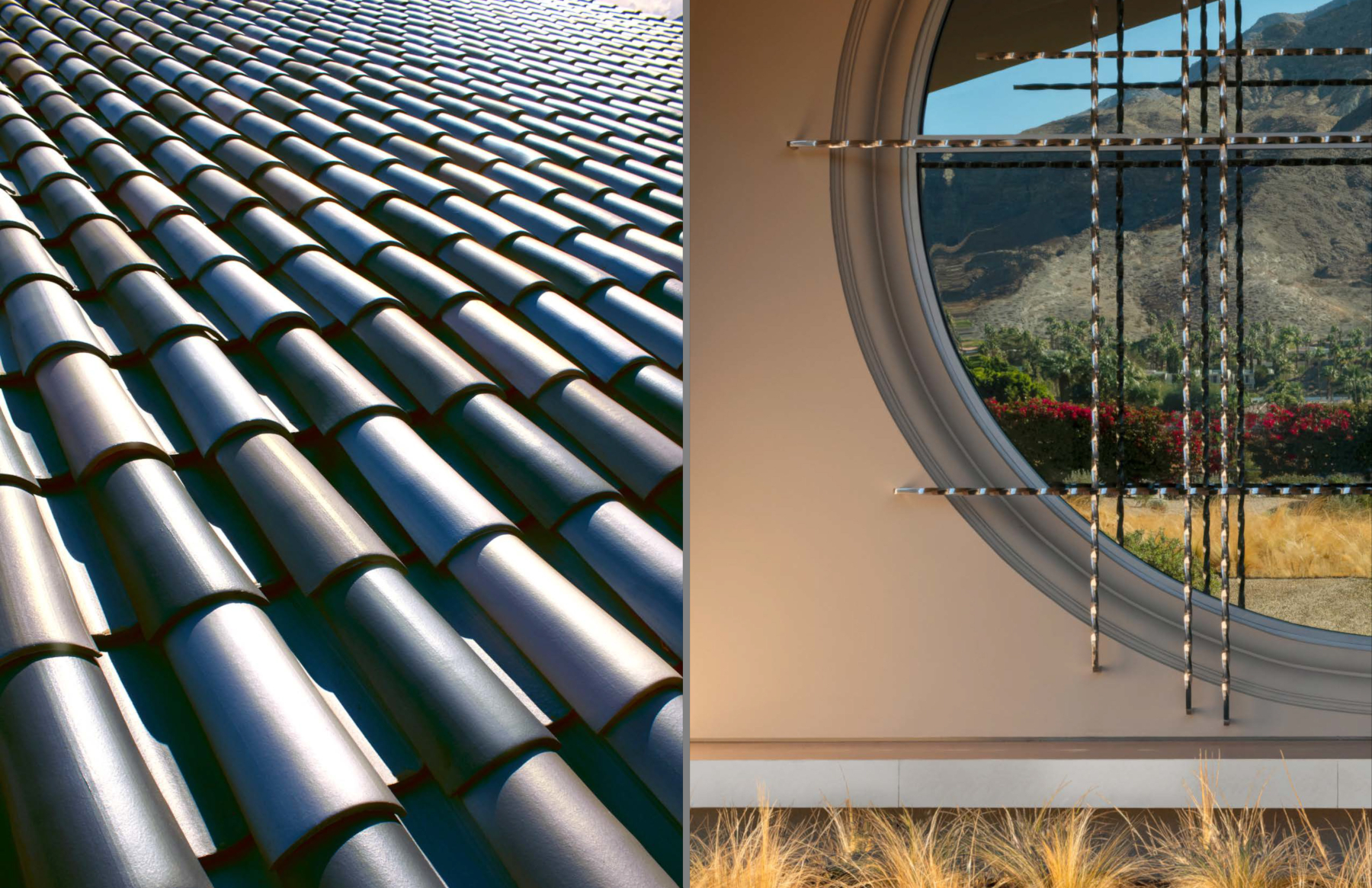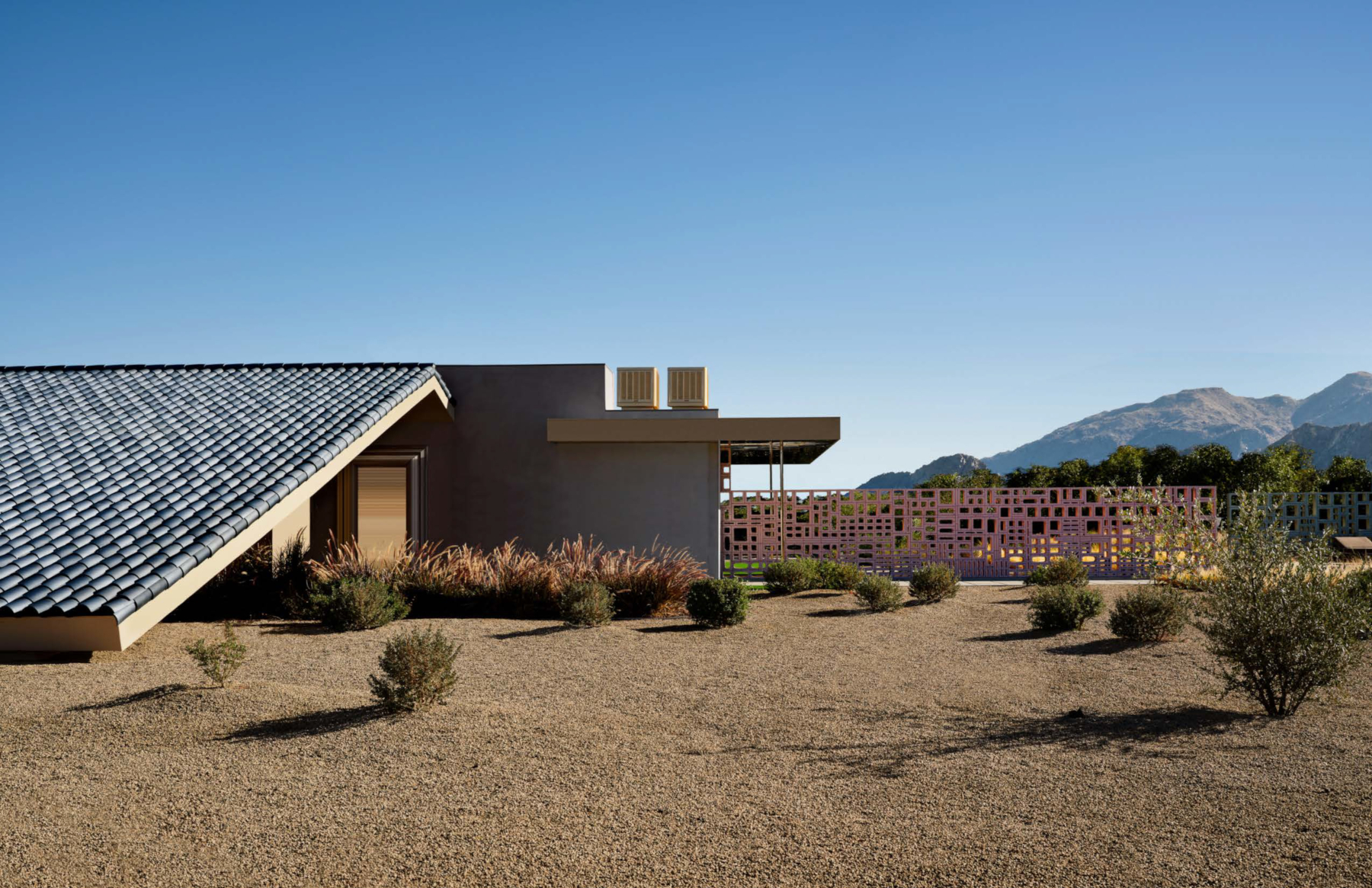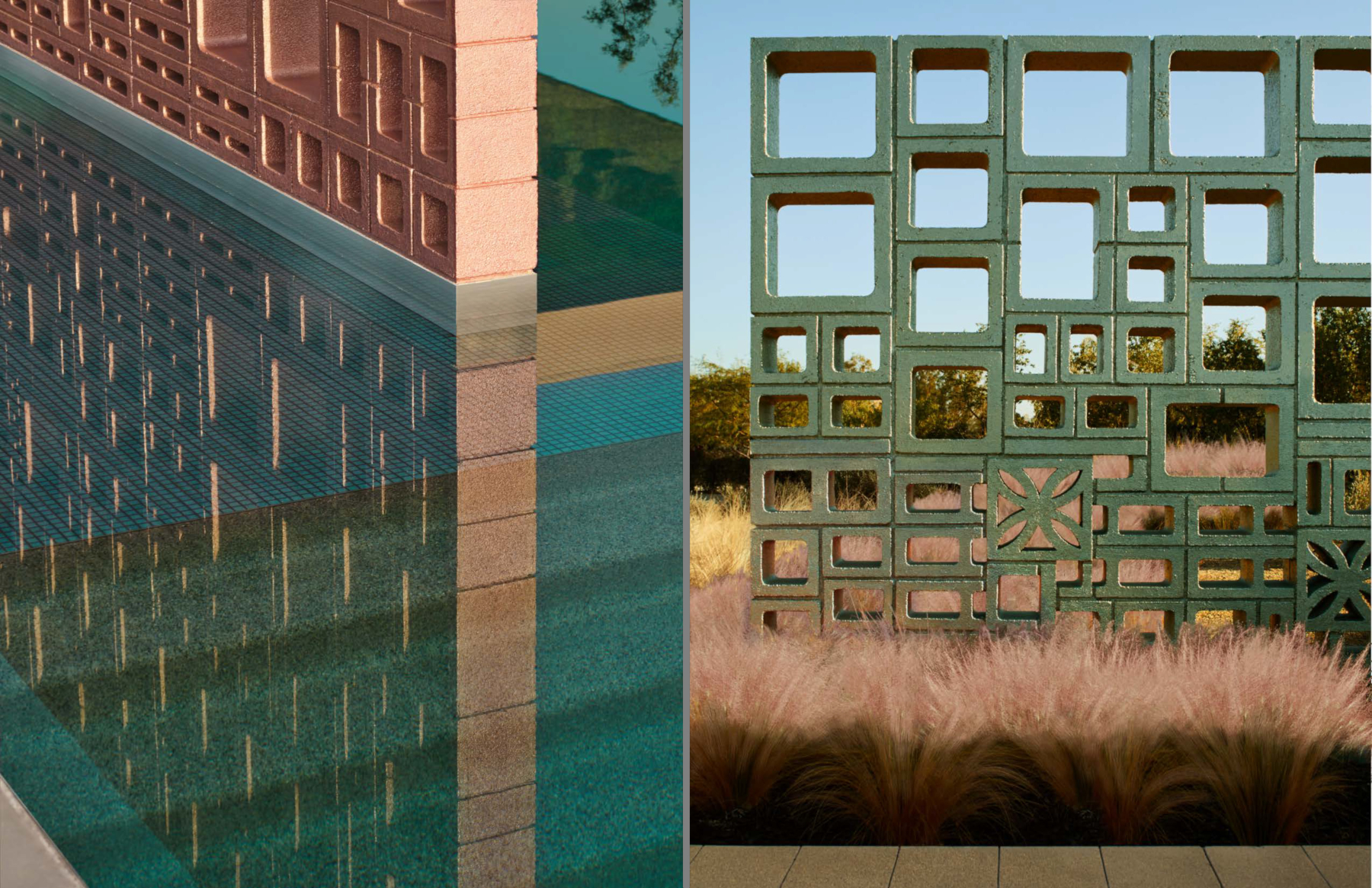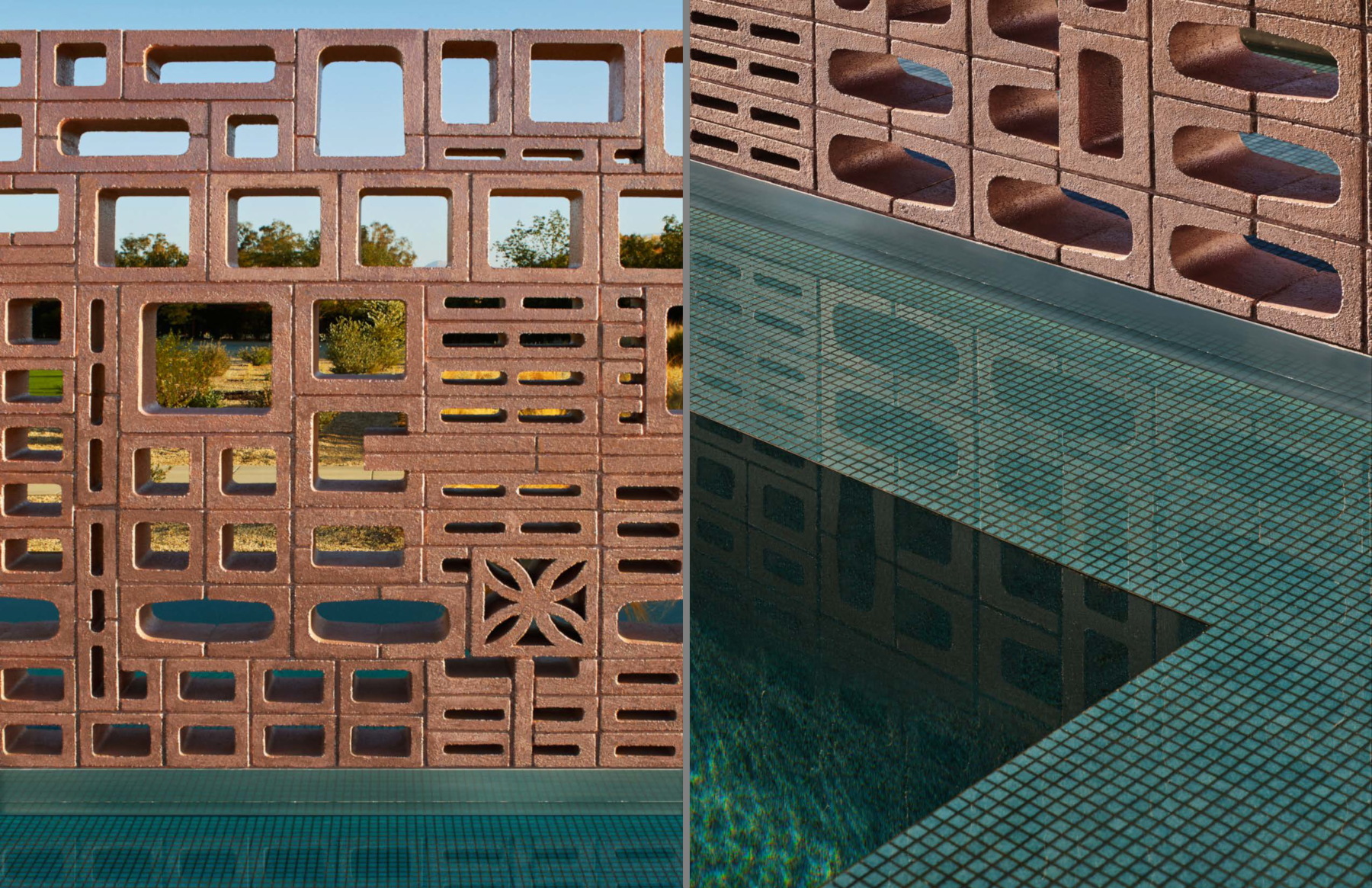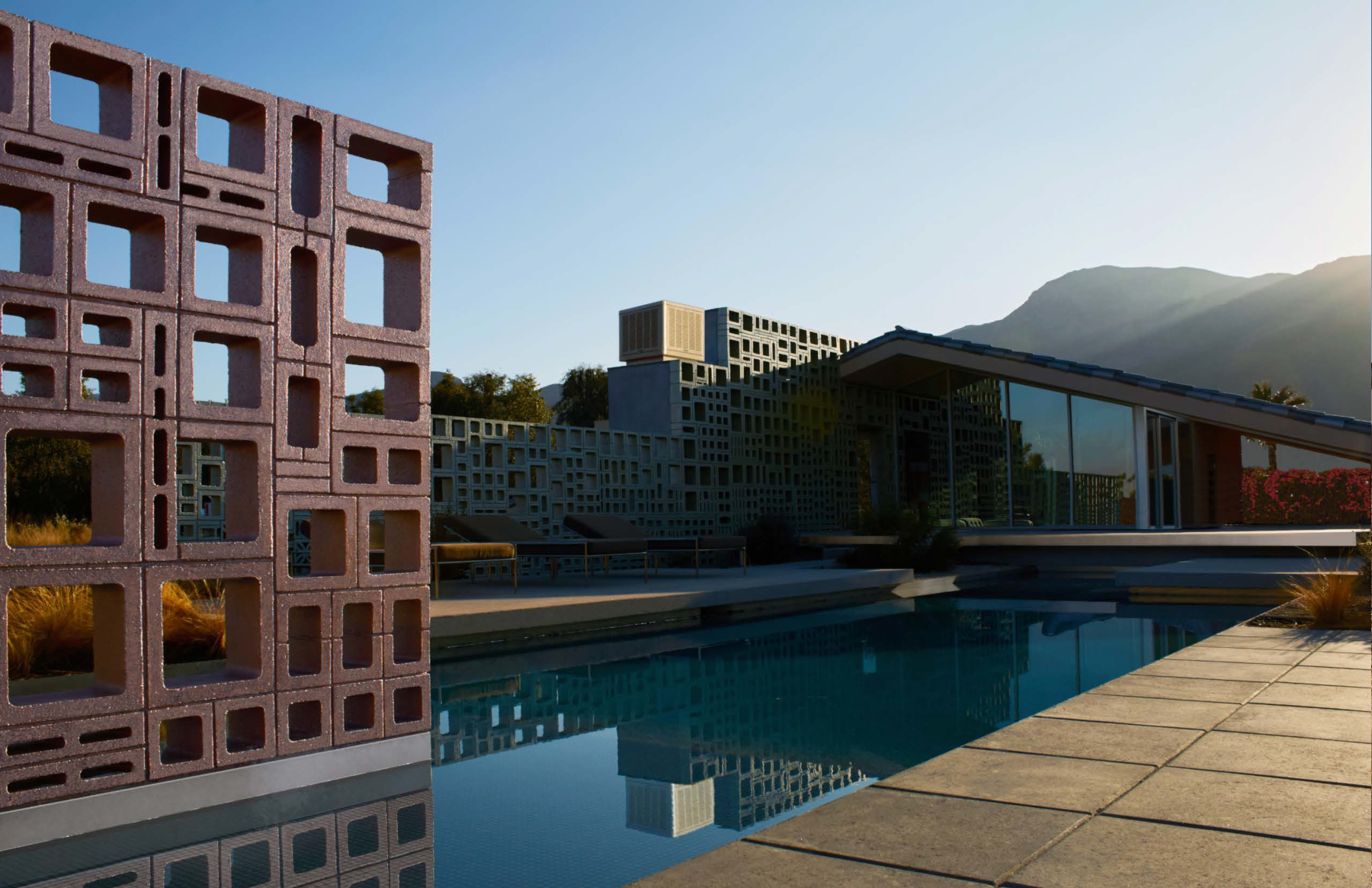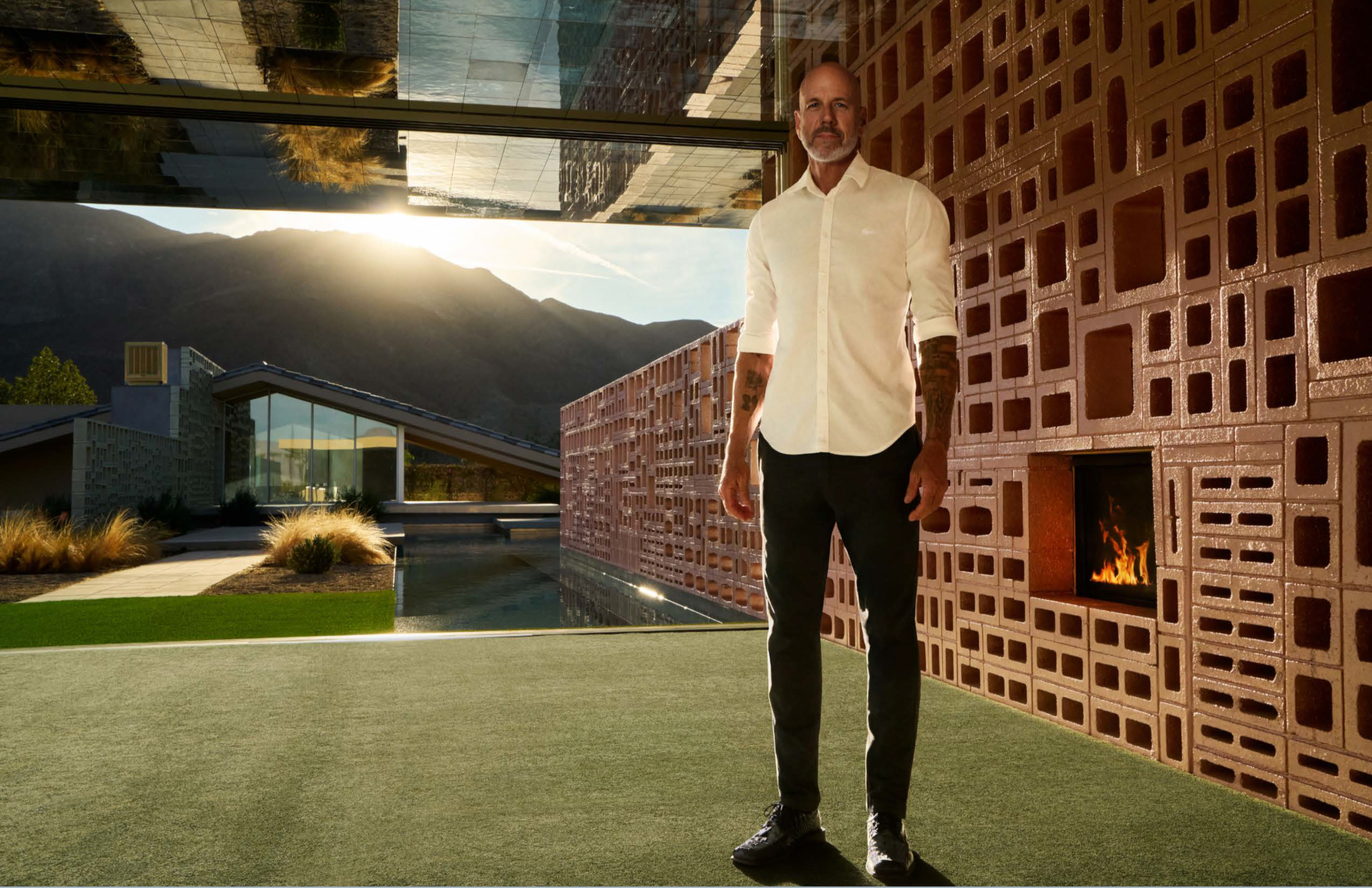This architecture looks different because I think differently about architecture. Like all other architects I am enamoured with the abstract qualities of form, space, and light, but I am also interested in creating new aesthetics from current culture and the meaning that we attach to buildings and materials. I draw from all elements of architecture and culture, from classic modernism to spanish, abandoned tract houses to golf courses, desert lifestyle and the dirt life, multi-cultural chic, and new art/design/fashion aesthetics- all to make something that feels relevant here and now.
Working in the Palm Springs area is a return to the landscape and neighborhoods where I was born and raised. This meant a lot more to me than I had imagined. Palm Springs has an amazing history of iconic houses, but I was always lost by its disconnect with contemporary culture. In my past work, I have gravitated toward raw desert areas where I can produce highly “cultured” architecture that is amplified by its contrast with nature. But nature in Palm Springs is so un-natural – while architecture has been pretending otherwise and repeating the dead-modernist fantasy for almost a century. Minimalism and machine aesthetics are a comforting fake future in a disembodied digital age. So, in this big gap between architecture of the fake past / fake future and the reality of our current culture, I found a vast unexplored realm to make architecture that connects to who we are now.
It started with a fake lawn that is reconsidered as a “real” material. It intersects the house, pool, and landscape in ways that real lawn could never, and it flows into the living room interior to re-think our connection to nature with a candor that fits our time.
Spanish tile roofs are the primary distinction between modern and traditional genres in architecture. . . but nobody else in contemporary culture cares about genres anymore. While music, art, and fashion have erased all boundaries and and run on “if it looks good, do it”, archictecture still polices its avant garde based on existing style boundaries. I don’t care. I discovered that I could re-define this material (…essentially pottery) with new glazes and colors, and the texture pulls forward . Here we are using 4 shades of silver – with all of its connotations of “futurism” – to make something conceptually dissonant of this traditional handcrafted material.
The form of the house started from a new formal concept. It is a modern glass box and a Spanish tract house re-spawned at the same coordinates and digitally edited together. The roof sits on the dirt like a dropped lowrider, while the floors hover above the earth as cantilevered planes. This new formal/spatial vocabulary is harder for non-architects to recognize for its innovation than novel surfaces (My previous houses are the only houses ever to sit “chopped” half-buried in the ground . . .which went almost unnoticed as we internationally gawked over every other aspect of the houses).. But, developing a new, self-conscious relationship between ground, building, and roof – one that could have multiple iterations and still read as an iconic “type”-was primary in the design from the massing to details. It is what gives this architecture its own place in the world.
Air-conditioner cube sculptures- smoothed, simplified and gold-coated- set on prominent podiums at each house are presented as idealized “representations” of ubiquitous equipment that we have all agreed to “not see” in the modernist mindset that has kept architecture from connecting with contemporary culture. These sculptures are the “jewelry” of the house, but meet the moment as architecture can engage “anything” – if it is interesting and finds a new kind of truth/beauty.
The masonry also found a new expression. There is a local modernist tradition of “breeze block” walls set in every possible pattern that expresses perfectly both the beauty and limitations of fake machine aesthetics and its ongoing deritives. I actually love machine aesthetics, but I love it for its pathology- The idea of wanting architecture to emulate machines is much more interesting than the mimetic result. I approached the pile of multi-shaped mass-produced block with a different mindset- as if it were a natural material . Rather than deriving a pattern from simplistic math, here it is intentional sculpture. Each block placed in the wall is a decision made by a person- arranged to pull the eye along it, create open and dense areas, and to suggest a pictorial reading. I think of it like a hand drawing of machine- expressing both, and the tension between them. Every block wall is built by a person- this one just doesn’t pretend to be a machine.
And other things built by this human… Stainless mirror panels at each bathroom that integrate faucet and custom light fixtures into asymmetrically composed “painting” panels. Polished stainless “wrought iron” at the front round window that turns the ubiquitous indicator of “bad neighborhoods ”in Southern California into an element of asian/Spanish fusion bling. A kitchen wrapped in silver crocodile leather with custom stainless steel hardware that updates Japanese tansu cabinet aesthetics on a monumental scale. And of course the mirror panel ceiling with hidden lighting that changes from dirty/sexy to elegant /sublime every time you look at it. All of this is there to wake up our senses, suggest new connections and connotations for things we think we already know, and re-define “beautiful” for our own time and place.
For me, this architecture is a basic expression of humanity and optimism that is badly needed in our time. Architecture can express more than just taste and power, or an escapist fantasy future. We are alive now . . . and we can make new architecture that doesn’t fit existing aesthetics under a “movement”, but makes its own singular aesthetics, connects new ideas, and changes old ones. It recognizes that things change as we do, and that we actively attach meaning to things as we live our lives.
What style of architecture is this? It isn’t style- its real architecture, happening in real time. Enjoy that feeling.
